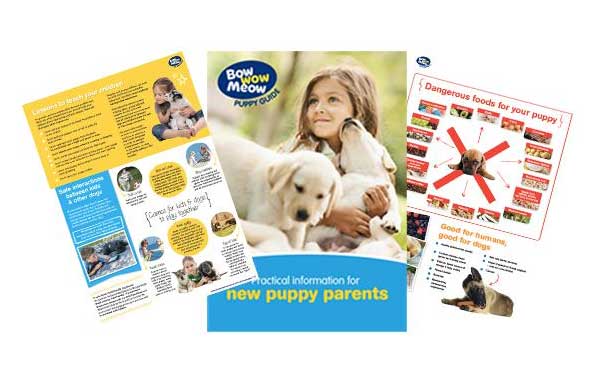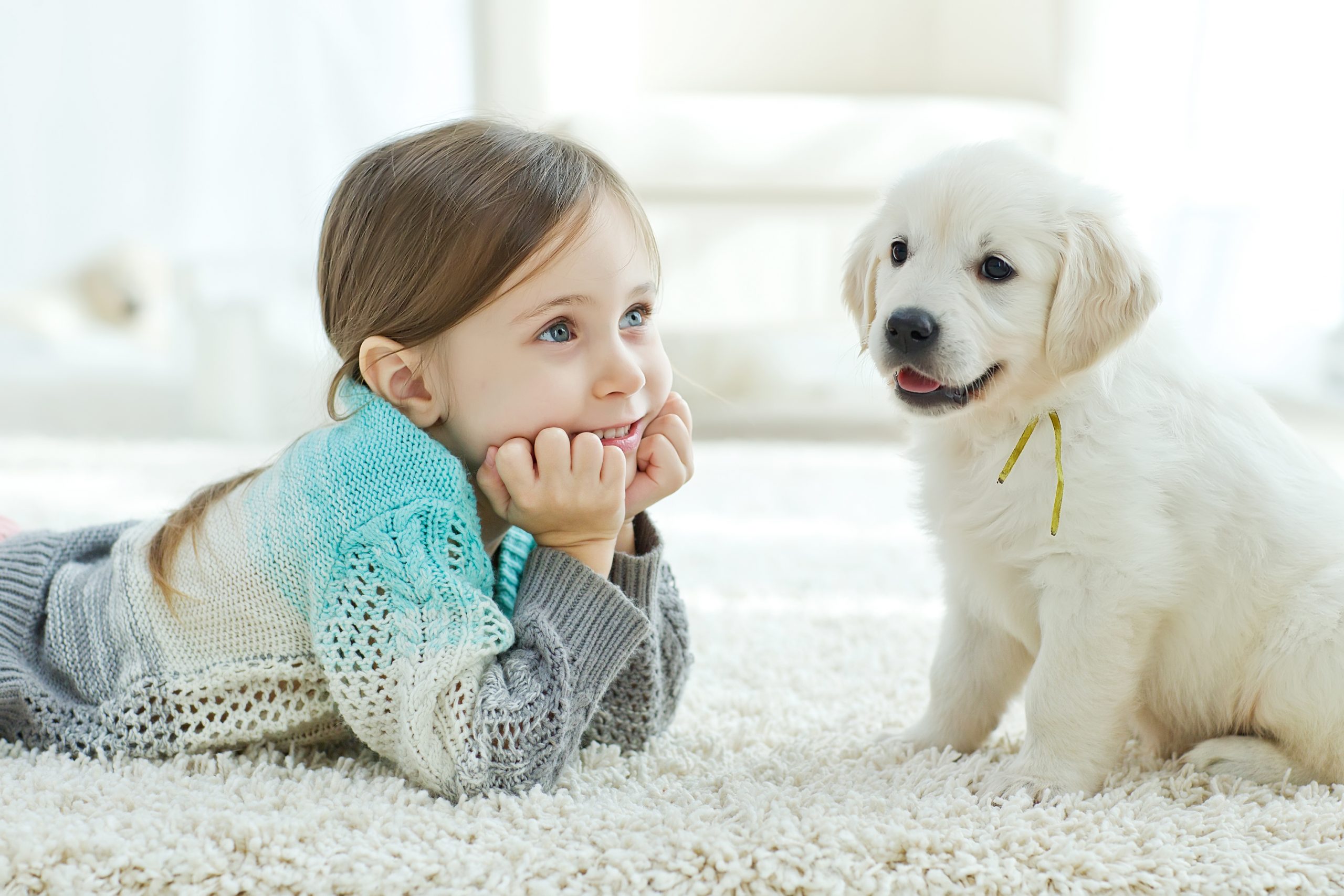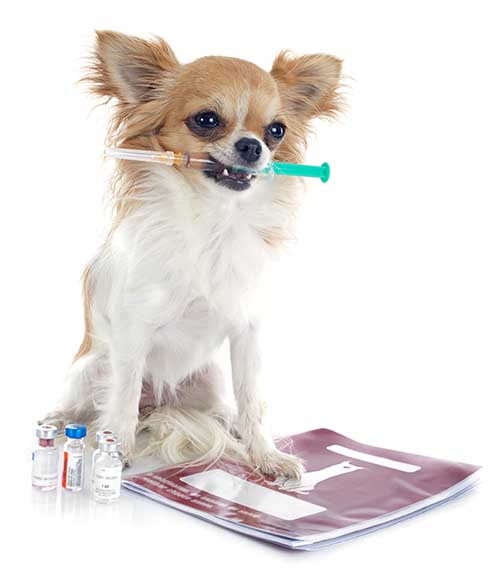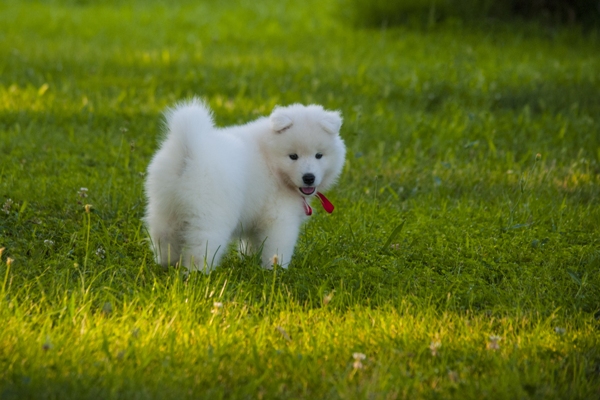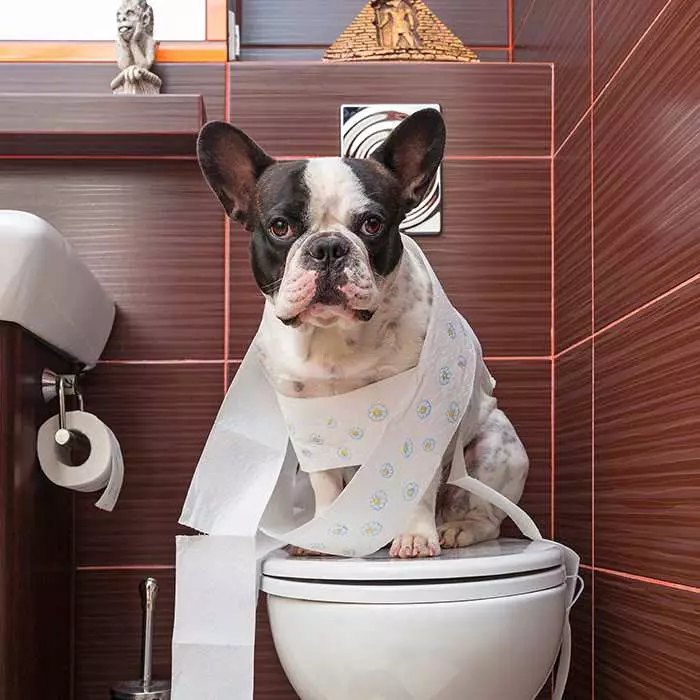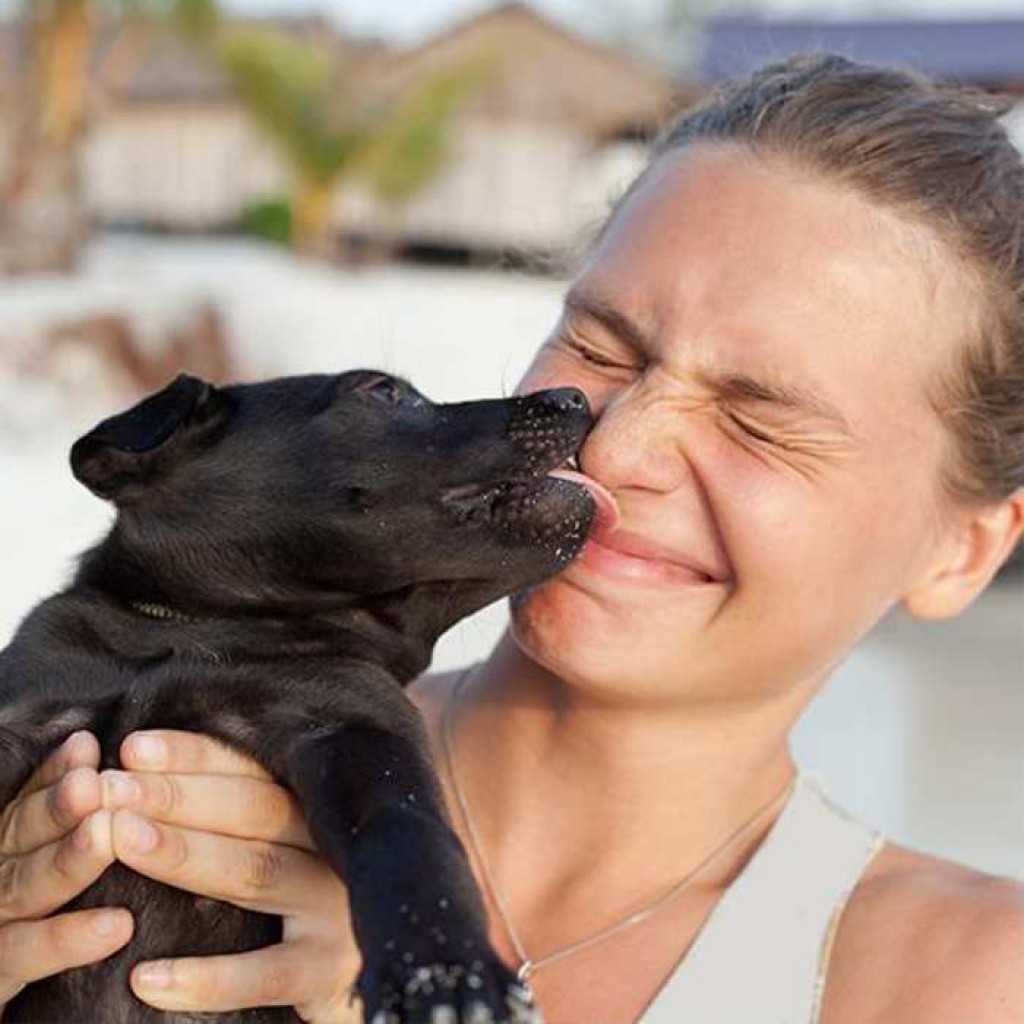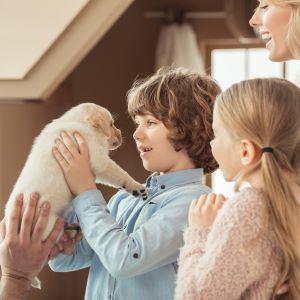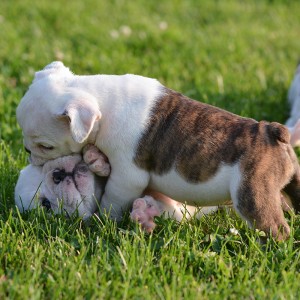Puppy grooming tips
Dog grooming is an essential part of caring for your dog, starting from when he is a young puppy. Grooming your puppy helps to keep him healthy and is time well spent together, enhancing your relationship and building trust and understanding.
A complete “puppy spa” entails grooming from head to paw, whether by you, a professional groomer or your veterinarian. Dog grooming isn’t just about making your puppy look good; it is also an opportunity to check your puppy’s general health.
Bathing
How often you should bathe or wash your puppy will vary between individual dogs and their particular needs. Essentially, dogs should only be bathed when necessary. Bathing your puppy too often can cause his skin to dry out by stripping away its natural oils. It can start looking dull and your pup might show signs of dandruff.
For healthy dogs the most common reason to bathe is to remove an unpleasant odour or because they’ve accumulated dirt on their coat. Try to wash your puppy only when he is dirty, has rolled in mud or has a puppy odour, and use only pet shampoos.
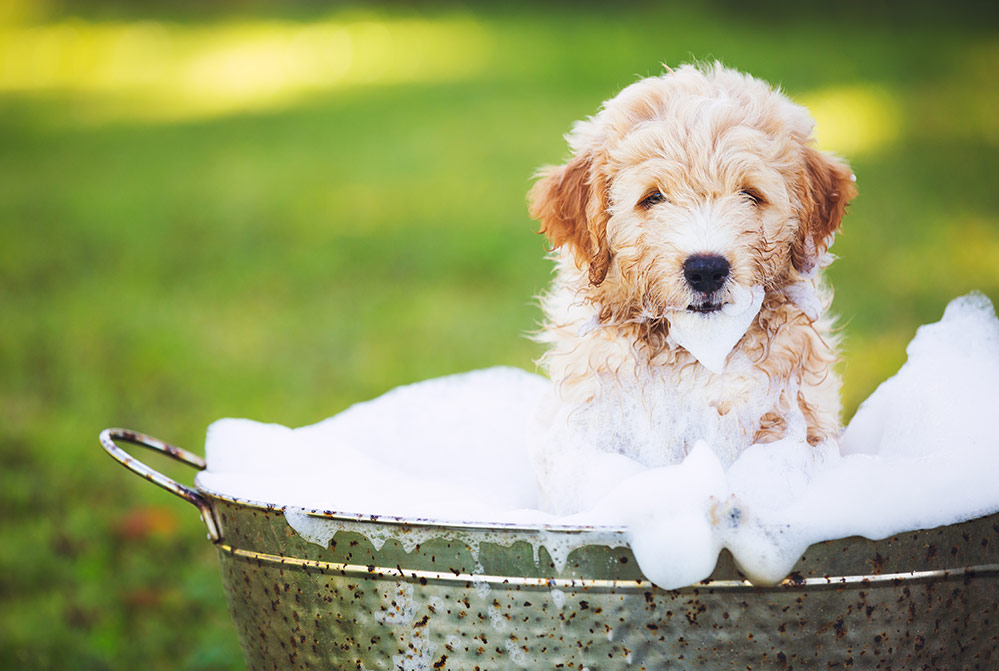
Most dogs rarely need more than a handful of baths a year, but if your puppy has a mischievous streak, you may find you need to perform a puppy wash more frequently. If your dog has a skin condition, bathing may be part of the medical treatment plan recommended by your vet. For these dogs, bathing can help to remove loose hair, scale and debris and improve the coat’s shine.
Puppy Grooming Tip 1
While your puppy is small enough, the kitchen or bathroom sink makes a good puppy bath, or you can use a plastic tub. When he gets larger, switch to the shower or bath and use a non-slip mat. Make sure the water is warm, not hot.
Dog grooming equipment for a puppy bath or puppy wash:
- Brush – to detangle matted and knotted hair before the bath
- Water – in a tub, basin or bath, depending on your puppy’s size
- Washcloth – to gently clean the head area
- Cotton balls – to prevent water getting in the ears
- Shampoo – choose one specifically for dogs and preferably hypoallergenic
- Conditioner – choose one specifically for dogs and preferably hypoallergenic
- Towel – to dry off excess water before puppy has a chance to shake it off
- Blow-dryer – for dogs with very long coats (do not use the ‘hot’ setting)
- Treats – to reward calm and cooperative behaviour
Read our Puppy Guide
Bringing home and looking after a new puppy can be a big challenge!
Our Puppy Guide is an easy to use comprehensive guide for new pet parents, jammed pack full of
useful information, that has been developed by pet professionals and puppy trainers.
Grooming
Puppy grooming entails regular brushing and maintaining the coat, as well as trimming the hair from time to time. Your puppy’s coat is different from his future adult coat, and is probably softer, fluffier and shorter. Even if it doesn’t really need to be groomed at this stage, it is important to get your pup used to being brushed and trimmed from an early age so that it will be easier when he is older and proper dog grooming becomes necessary. Brushing your puppy regularly is recommended, as it helps with blood circulation and can reduce shedding if done weekly.
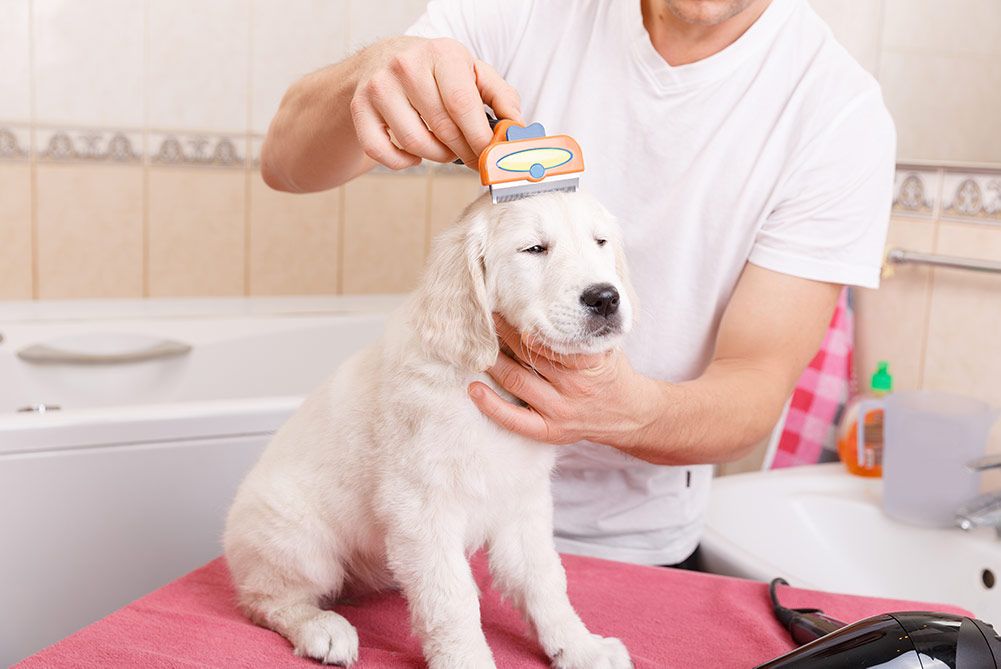
Dog grooming is particularly essential for long-furred breeds such as schnauzers, poodles or any hybrid breeds that are mixed with poodles or other long-haired breeds. These dogs require regular grooming to prevent their fur from matting. It is recommended that your dog visits the grooming salon every 8-12 weeks. Small dog grooming may require specialised grooming techniques, for example, poodles need scissoring into shape.
Puppy Grooming Tip 2
When booking in for the first puppy dog grooming appointment, ask for a quiet day at the grooming salon and mention that it is your puppy’s first time. The groomer can only do a good job if your puppy isn’t scared. Get your puppy used to noise they will be exposed to at the salon by using the Sound Proof Puppy Training App from the iOS and Android App store.
Dog grooming equipment for puppy grooming:
- Brush – with short or long bristles, suitable for you puppy’s coat type and length
- Comb – for medium to long-haired coats
- Grooming glove – a soft glove can be used instead of a brush for very short haired breeds
- Scissors – blunt-nosed safety scissors are best
- Clippers – an alternative to scissors
- Treats – to reward calm and cooperative behaviour
Ears
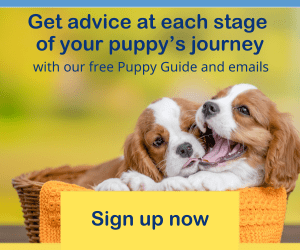 Check your puppy’s ears regularly – we recommend every two weeks, especially when you have a puppy with long floppy ears, where dirt can easily collect and can cause ear infections. If your puppy is not showing any signs of an ear problem, then it is best to leave his ears alone. This is because putting ear products into healthy ears can potentially cause a problem.
Check your puppy’s ears regularly – we recommend every two weeks, especially when you have a puppy with long floppy ears, where dirt can easily collect and can cause ear infections. If your puppy is not showing any signs of an ear problem, then it is best to leave his ears alone. This is because putting ear products into healthy ears can potentially cause a problem.
However, if your puppy is shaking his head a lot and trying to scratch his ears with his paws, this could be a sign of an ear infection or too much dirt in your puppy’s ears. Other signs can include ear discharge, rubbing ears along the floor or furniture, redness and swelling around the ear opening, sensitivity around the head area, a head tilt and an unpleasant odour. Get him checked out by your vet if you have any concerns.
Eyes
Check your puppy’s eyes often – regular cleaning is recommended to keep the eye area clean from dust and dirt, especially if you have a breed that requires grooming around its face. The hair near their eyes can obscure vision and cause dirt to collect and tear ducts to block. Signs of an eye problem include eye discharge, redness and squinting or holding an eye closed. If you notice any eye changes take your pet to the local vet as soon as possible, as eye problems can worsen rapidly.
Dog grooming equipment for puppy’s eyes:
- Blunt-nosed safety scissors
Teeth
Optimal puppy grooming includes establishing a good oral hygiene routine from an early age. Puppy teeth usually start falling out from four months of age, so start checking your puppy’s teeth around this time to ensure that all milk teeth fall out and the new canines start coming through.
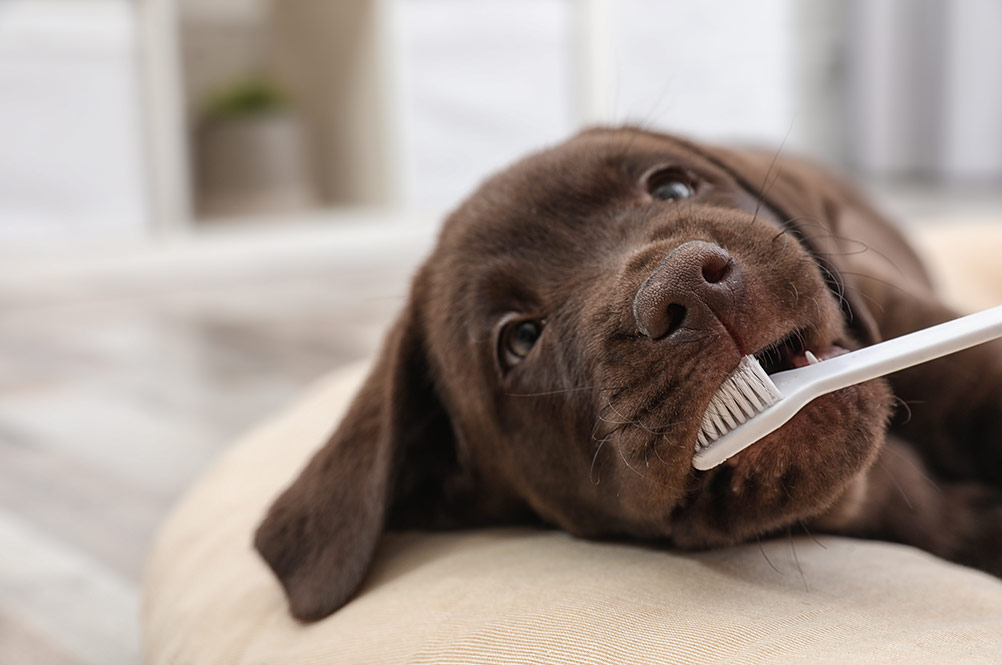
Over time, many dogs will experience some form of dental disease caused by plaque build-up and infection. Regular home dental checks and teeth brushing two to three times per week will help to remove plaque from the teeth and increase the chance of a healthy mouth. Ask your vet about any additional dental care recommended for your puppy.
Puppy Grooming Tip 3
For successful teeth brushing, puppies need to be trained to tolerate having a toothbrush in their mouths from a young age. Start by massaging your puppy’s lips with your finger for 30 to 60 seconds per day for a few weeks, then progress to her teeth and gums. After a few times, use a tiny amount of doggie toothpaste on your finger to get her used to the taste. When she is comfortable with this, introduce a small doggie toothbrush or finger-brush with soft bristles.
Dog grooming equipment for puppy’s teeth:
- Doggie toothbrush or finger-brush
- Doggie toothpaste or gel
- Safe chew items – chew toys and dental chews
Paws
It is important to check your puppy’s feet regularly for any wounds, infections or foreign objects that have become lodged in them. Carefully trim any excess hair in between the footpads and remove any trapped objects such as grass seeds or burrs, pebbles, small bits of broken glass or other debris. Remove any splinters or debris gently with tweezers. To avoid painful matting of the hair between the toes, comb and trim the hair so that it is even with the pads.
Dog grooming equipment for puppy’s paws:
- Small comb
- Blunt-nosed safety scissors
- Antibacterial wash for small cuts or minor burns (for more serious wounds, visit your vet)
- Moisturiser for dry or cracked footpads, if recommended by your vet (not one for humans)
Nails
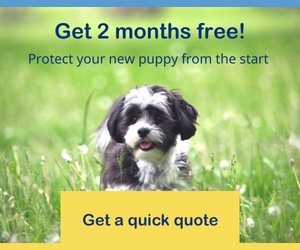 Once your puppy starts walking on pavements, his nails will be trimmed naturally by walking on the hard surface. Regularly check the condition and length of his nails, including any ‘thumb’ nails, also known as ‘Dew claws’, higher up on the front and back feet. If they need further trimming, we suggest you take your puppy to your vet or groomer, who can do the job for you or show you how to do it safely. Once you know how, if the nails are too long you can carefully trim a small amount off the tip. Be mindful that if the nails are trimmed too short, they can bleed and cause pain.
Once your puppy starts walking on pavements, his nails will be trimmed naturally by walking on the hard surface. Regularly check the condition and length of his nails, including any ‘thumb’ nails, also known as ‘Dew claws’, higher up on the front and back feet. If they need further trimming, we suggest you take your puppy to your vet or groomer, who can do the job for you or show you how to do it safely. Once you know how, if the nails are too long you can carefully trim a small amount off the tip. Be mindful that if the nails are trimmed too short, they can bleed and cause pain.
Dog grooming equipment for puppy’s nails:
- Nail clippers – get advice from the vet or dog groomer on what type to use
- Nail file – to smooth rough nail edges
Anal glands
Not a sexy topic, but we thought we’d cover it! Dogs have two small anal glands next to their anus, which should get expressed when your dog poops. If your puppy has lots of soft stools they might not get expressed and it can get uncomfortable. Your pup might start rubbing his bum on the floor to empty them, or let off some really smelly farts.
A groomer or vet will be able to help with emptying them.
Puppy Grooming Tip 4
If you are super keen, you can learn on YouTube how to express your dog’s anal glands yourself!
Puppies are very adventurous and highly accident prone, and often end up hurting themselves whilst they are still growing. Their underdeveloped immune system means they are also vulnerable to getting infections and catching diseases.
Consider pet insurance to help protect you and your puppy from the start. Get your first 2 months cover free 2!
Bow Wow Meow Pet Insurance can help protect you and your puppy should an unexpected trip to the vet occur.

